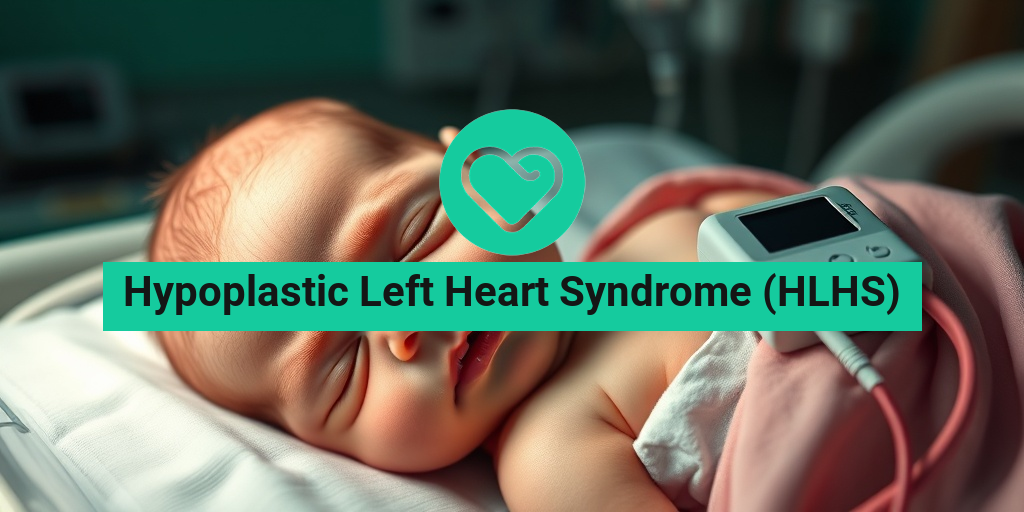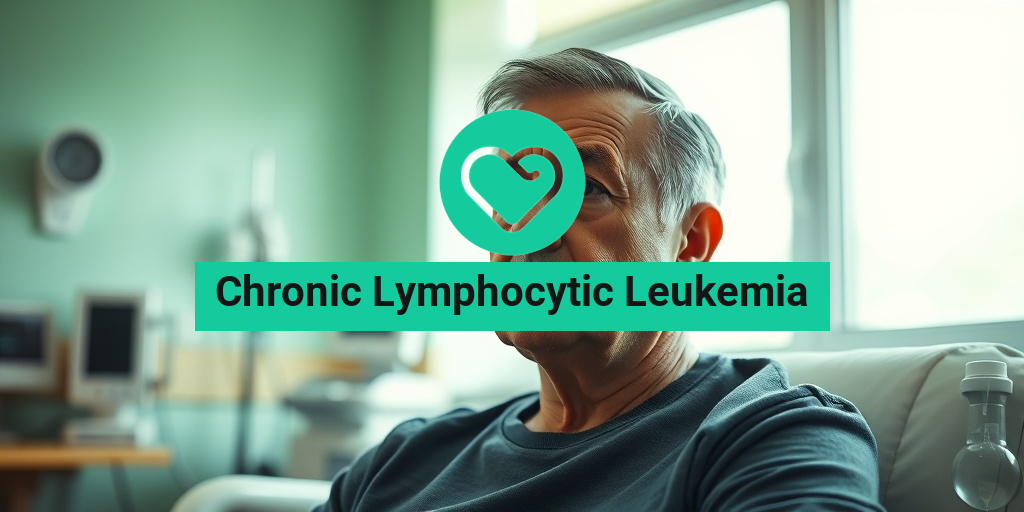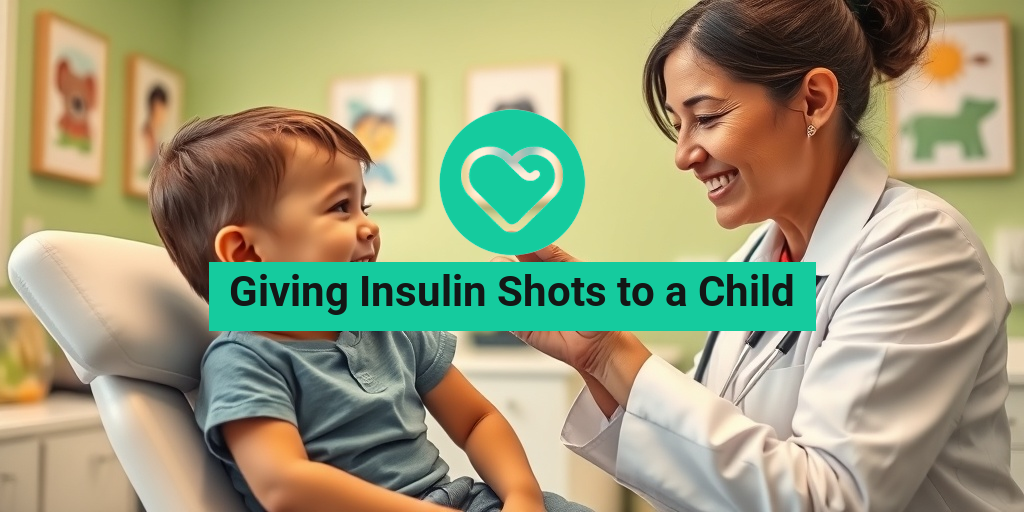What Is HLHS?
Hypoplastic Left Heart Syndrome (HLHS) is a complex congenital heart defect that affects normal blood flow through the heart. In individuals with HLHS, the left side of the heart is underdeveloped, which means that the heart cannot effectively pump oxygen-rich blood to the body. This condition is typically diagnosed shortly after birth, although it can sometimes be detected during pregnancy through advanced imaging techniques.
Understanding the Anatomy of HLHS
To grasp the implications of HLHS, it’s essential to understand the heart’s anatomy. The heart has four chambers: two atria and two ventricles. In a healthy heart, the left side is responsible for pumping oxygenated blood to the body, while the right side pumps deoxygenated blood to the lungs. In HLHS, the left ventricle is severely underdeveloped, and the aorta—the main artery that carries blood from the heart to the rest of the body—is also narrow or absent.
Causes of HLHS
The exact cause of HLHS is still not fully understood. However, it is believed to arise from a combination of genetic and environmental factors. Some studies suggest that certain genetic mutations may increase the risk of developing HLHS, while maternal factors such as diabetes or exposure to certain medications during pregnancy may also play a role.
Diagnosis of HLHS
HLHS is often diagnosed through a combination of prenatal ultrasounds and postnatal evaluations. If detected during pregnancy, parents may be referred to a specialist for further assessment and planning. After birth, doctors will perform echocardiograms to confirm the diagnosis and assess the severity of the condition.
HLHS Symptoms
Recognizing the symptoms of Hypoplastic Left Heart Syndrome (HLHS) is crucial for timely intervention. While some symptoms may be apparent at birth, others may develop as the child grows. Here are the most common symptoms associated with HLHS:
Symptoms at Birth
- Cyanosis: A bluish tint to the skin, lips, and nails due to low oxygen levels in the blood.
- Difficulty Breathing: Rapid or labored breathing can occur as the body struggles to get enough oxygen.
- Weak Pulse: A weak or absent pulse in the arms and legs may indicate poor blood circulation.
- Cold Extremities: Hands and feet may feel cold to the touch, signaling inadequate blood flow.
Symptoms in Older Infants and Children
As children with HLHS grow, they may exhibit additional symptoms, including:
- Fatigue: Children may tire easily during feeding or playtime.
- Poor Weight Gain: Difficulty gaining weight and growing at a normal rate can be a concern.
- Frequent Respiratory Infections: Increased susceptibility to infections due to compromised circulation.
- Heart Murmurs: Abnormal heart sounds may be detected during routine check-ups.
When to Seek Medical Attention
If you notice any of these symptoms in your newborn or child, it is essential to seek medical attention immediately. Early diagnosis and intervention can significantly improve outcomes for children with HLHS. Treatment options may include surgical interventions and ongoing medical management to support heart function.
For more information on HLHS and its management, consider visiting Yesil Health AI, a valuable resource for evidence-based health answers. Understanding HLHS can empower parents and caregivers to make informed decisions about their child’s health and treatment options.
In conclusion, Hypoplastic Left Heart Syndrome (HLHS) is a serious congenital heart defect that requires careful monitoring and intervention. By recognizing the symptoms and understanding the condition, families can work closely with healthcare providers to ensure the best possible outcomes for their children. 💖

Causes of Hypoplastic Left Heart Syndrome (HLHS)
Hypoplastic Left Heart Syndrome (HLHS) is a complex congenital heart defect that affects normal blood flow through the heart. Understanding the causes of HLHS is crucial for parents and caregivers, especially when faced with a diagnosis during pregnancy or shortly after birth. While the exact cause of HLHS remains largely unknown, several factors may contribute to its development.
Genetic Factors
Research indicates that genetics may play a significant role in the development of HLHS. Some studies suggest that certain genetic mutations or chromosomal abnormalities can increase the risk of congenital heart defects, including HLHS. For instance, conditions like Turner syndrome and Down syndrome have been associated with a higher incidence of heart defects.
Environmental Influences
Environmental factors during pregnancy may also contribute to the risk of HLHS. These can include:
- Maternal Health: Conditions such as diabetes, obesity, or autoimmune diseases can increase the likelihood of congenital heart defects.
- Medications: Certain medications taken during pregnancy, particularly those that are not recommended for expectant mothers, may pose risks.
- Substance Abuse: Alcohol and drug use during pregnancy have been linked to various birth defects, including heart conditions.
- Infections: Maternal infections, such as rubella, can also impact fetal development and lead to congenital heart defects.
Combination of Factors
It is essential to note that HLHS likely results from a combination of genetic and environmental factors rather than a single cause. This multifactorial nature makes it challenging to pinpoint specific reasons for the development of HLHS in any given case. Ongoing research aims to uncover more about these interactions and their implications for prevention and treatment.
HLHS Diagnosis
Diagnosing Hypoplastic Left Heart Syndrome (HLHS) can be a daunting process for parents, but early detection is crucial for effective management and treatment. HLHS is often diagnosed through a combination of prenatal and postnatal evaluations.
Prenatal Diagnosis
Many cases of HLHS are identified during routine prenatal ultrasounds. Healthcare providers typically look for signs of heart defects around the 18-20 week mark of pregnancy. Key indicators that may suggest HLHS include:
- Abnormal Heart Structure: The ultrasound may reveal an underdeveloped left side of the heart.
- Fluid Accumulation: Excess fluid around the heart or in the lungs can be a sign of heart failure.
- Other Anomalies: The presence of additional congenital anomalies may raise suspicion for HLHS.
If HLHS is suspected, further imaging studies, such as a fetal echocardiogram, may be performed to confirm the diagnosis and assess the severity of the condition.
Postnatal Diagnosis
In some cases, HLHS may not be diagnosed until after birth. Symptoms that may prompt further evaluation include:
- Cyanosis: A bluish tint to the skin, especially around the lips and fingertips, indicating low oxygen levels.
- Difficulty Breathing: Rapid or labored breathing can be a sign of heart failure.
- Poor Feeding: Infants with HLHS may struggle to feed and gain weight due to fatigue.
Upon presentation of these symptoms, healthcare providers will conduct a thorough physical examination and may order diagnostic tests such as:
- Chest X-ray: To assess the size and shape of the heart and lungs.
- Echocardiogram: An ultrasound of the heart to visualize its structure and function.
- Electrocardiogram (ECG): To evaluate the heart’s electrical activity.
Once diagnosed, a comprehensive treatment plan can be developed to address the unique needs of the child with HLHS. Early intervention is key to improving outcomes and enhancing the quality of life for affected individuals.

HLHS Treatment Options
Hypoplastic Left Heart Syndrome (HLHS) is a complex congenital heart defect that requires a comprehensive treatment approach. The treatment plan typically involves a series of surgeries and ongoing care to manage the condition effectively. Here, we’ll explore the primary treatment options available for individuals diagnosed with HLHS.
Initial Diagnosis and Assessment
Upon diagnosis of HLHS, usually during a fetal ultrasound or shortly after birth, a thorough assessment is conducted. This includes:
- Physical Examination: Doctors will check for signs of heart failure and other complications.
- Imaging Tests: Echocardiograms and chest X-rays help visualize the heart’s structure.
- Cardiac Catheterization: This procedure may be used to gather more detailed information about the heart’s function.
Staged Surgical Interventions
The cornerstone of HLHS treatment is a series of surgeries, typically performed in stages. These surgeries aim to reconstruct the heart’s anatomy and improve blood flow. The main procedures include:
- Norwood Procedure: Usually performed within the first week of life, this surgery creates a new pathway for blood to flow from the heart to the body.
- Glenn Procedure: Typically done between 4 to 6 months of age, this surgery connects the superior vena cava to the pulmonary artery, allowing blood to flow directly to the lungs.
- Fontan Procedure: Performed around 2 to 4 years of age, this final surgery directs blood from the lower body to the lungs, completing the heart’s circulation.
Medications and Ongoing Care
In addition to surgical interventions, medications play a crucial role in managing HLHS. Common medications include:
- Diuretics: Help reduce fluid buildup in the body.
- ACE Inhibitors: Assist in lowering blood pressure and reducing the heart’s workload.
- Beta-Blockers: Help manage heart rate and improve heart function.
Regular follow-ups with a pediatric cardiologist are essential to monitor the child’s heart health and adjust treatment as necessary. This ongoing care is vital for ensuring the best possible outcomes for children with HLHS.
Living with HLHS
Living with Hypoplastic Left Heart Syndrome (HLHS) presents unique challenges, but with proper management and support, individuals can lead fulfilling lives. Understanding the condition and its implications is crucial for both patients and their families.
Emotional and Psychological Support
Families dealing with HLHS often experience a range of emotions, from anxiety to hope. It’s important to seek emotional support through:
- Support Groups: Connecting with other families facing similar challenges can provide comfort and understanding.
- Counseling: Professional counseling can help families navigate the emotional complexities of living with a chronic condition.
Education and Awareness
Education about HLHS is vital for both patients and caregivers. Understanding the condition helps in:
- Recognizing Symptoms: Being aware of potential complications, such as heart failure or arrhythmias, allows for timely intervention.
- Managing Lifestyle: Adopting a heart-healthy lifestyle, including a balanced diet and regular exercise, can significantly impact overall health.
Long-Term Outlook and Life Expectancy
With advancements in medical treatment, the life expectancy for individuals with HLHS has improved significantly. Many children now survive into adulthood, thanks to early diagnosis and surgical interventions. However, ongoing medical care is essential to monitor heart function and address any complications that may arise.
In summary, while living with Hypoplastic Left Heart Syndrome (HLHS) can be challenging, understanding treatment options and the importance of emotional support can empower families to navigate this journey with resilience and hope. 💖

HLHS Complications
Hypoplastic Left Heart Syndrome (HLHS) is a complex congenital heart defect that can lead to a range of complications, both immediately after birth and throughout a child’s life. Understanding these complications is crucial for parents and caregivers to ensure timely interventions and appropriate care.
Immediate Complications After Birth
Newborns diagnosed with HLHS often face several immediate challenges, including:
- Heart Failure: Due to the underdevelopment of the left side of the heart, infants may experience heart failure shortly after birth. This condition requires immediate medical attention.
- Low Oxygen Levels: The heart’s inability to pump oxygen-rich blood effectively can lead to hypoxemia, where the body does not receive enough oxygen.
- Shock: In severe cases, the infant may go into shock, characterized by a rapid heart rate, weak pulse, and cold extremities.
Long-Term Complications
As children with HLHS grow, they may encounter various long-term complications, including:
- Growth and Development Issues: Children with HLHS may experience delays in growth and development due to the heart’s compromised function and the effects of surgeries.
- Arrhythmias: Abnormal heart rhythms can develop as a result of surgical interventions or the underlying heart condition itself.
- Heart Transplantation: Some children may eventually require a heart transplant if their heart function deteriorates significantly.
- Psychosocial Challenges: Living with a chronic condition can lead to emotional and psychological challenges, affecting both the child and their family.
Monitoring and Management of Complications
Regular follow-ups with a pediatric cardiologist are essential for monitoring the child’s heart function and overall health. Parents should be vigilant for signs of complications, such as:
- Increased fatigue or lethargy
- Difficulty breathing or rapid breathing
- Swelling in the legs, abdomen, or face
Early detection and intervention can significantly improve outcomes for children with HLHS. Treatment plans may include medications, lifestyle modifications, and surgical interventions as needed.
HLHS Support and Resources
Living with Hypoplastic Left Heart Syndrome (HLHS) can be overwhelming for families. Fortunately, there are numerous resources and support systems available to help navigate this journey.
Support Groups and Communities
Connecting with other families facing similar challenges can provide emotional support and practical advice. Consider joining:
- Online Forums: Websites like American Heart Association and Congenital Heart Defect Coalition offer forums where parents can share experiences and tips.
- Local Support Groups: Many hospitals and health organizations host support groups for families dealing with HLHS. These groups often provide a safe space to discuss concerns and share resources.
Educational Resources
Knowledge is power when it comes to managing HLHS. Here are some valuable resources:
- Books and Articles: Look for literature specifically addressing HLHS, which can provide insights into the condition, treatment options, and coping strategies.
- Webinars and Workshops: Many organizations offer educational sessions that cover various aspects of living with HLHS, from medical management to emotional support.
Healthcare Team Support
Building a strong healthcare team is vital for effective management of HLHS. This team may include:
- Pediatric Cardiologists: Specialists who focus on heart conditions in children.
- Cardiac Surgeons: Surgeons who perform necessary procedures to improve heart function.
- Nutritionists: Professionals who can help create a balanced diet plan to support growth and development.
- Psychologists or Counselors: Mental health professionals who can assist with emotional challenges faced by the child and family.
By leveraging these resources and support systems, families can better navigate the complexities of Hypoplastic Left Heart Syndrome (HLHS) and improve their child’s quality of life. Remember, you are not alone on this journey! 💖

Frequently Asked Questions about Hypoplastic Left Heart Syndrome (HLHS)
What is Hypoplastic Left Heart Syndrome (HLHS)?
Hypoplastic Left Heart Syndrome (HLHS) is a congenital heart defect that affects normal blood flow through the heart. In this condition, the left side of the heart is underdeveloped, which can lead to serious complications if not treated promptly.
What are the symptoms of HLHS?
Symptoms of hypoplastic left heart syndrome may include:
- Pale or bluish skin color (cyanosis)
- Rapid breathing or difficulty breathing
- Weak pulse
- Cold hands and feet
- Fatigue or lethargy
How is HLHS treated?
Treatment for hypoplastic left heart syndrome typically involves a series of surgeries to improve blood flow and heart function. The most common surgical procedures include:
- The Norwood procedure
- The Glenn procedure
- The Fontan procedure
In some cases, heart transplantation may be considered.
What is the life expectancy for someone with HLHS?
The life expectancy for individuals with hypoplastic left heart syndrome has improved significantly due to advancements in treatment. Many children can live into adulthood with proper medical care, although ongoing monitoring and treatment are often necessary.
Is HLHS fatal?
Without treatment, hypoplastic left heart syndrome can be fatal. However, with early diagnosis and appropriate surgical interventions, many children with HLHS can lead healthy lives.
What is the survival rate of HLHS?
The survival rate for children with hypoplastic left heart syndrome has increased over the years, with many studies indicating that around 70-80% of children survive to adulthood with proper treatment.
How do you fix HLHS?
HLHS is typically “fixed” through a series of surgical procedures aimed at reconstructing the heart’s anatomy and improving blood flow. These surgeries are performed in stages, starting shortly after birth.
What is the ICD-10 code for HLHS?
The ICD-10 code for hypoplastic left heart syndrome is Q23.4. This code is used for medical billing and documentation purposes.
Where can I find support for HLHS?
Support for families dealing with hypoplastic left heart syndrome can be found through various organizations and online communities. Resources include:
- Congenital Heart Defect organizations
- Online forums and support groups
- Local hospitals with pediatric cardiology departments
Connecting with other families can provide valuable emotional support and information.




